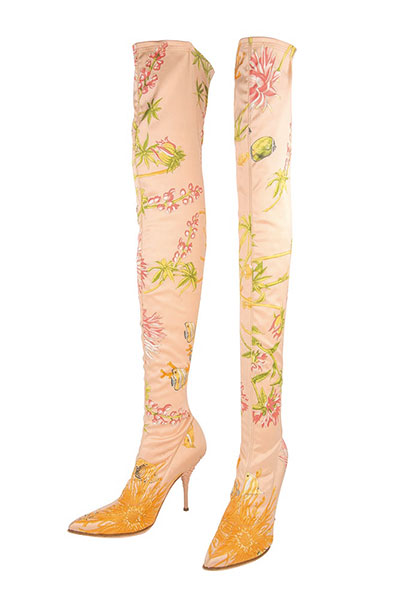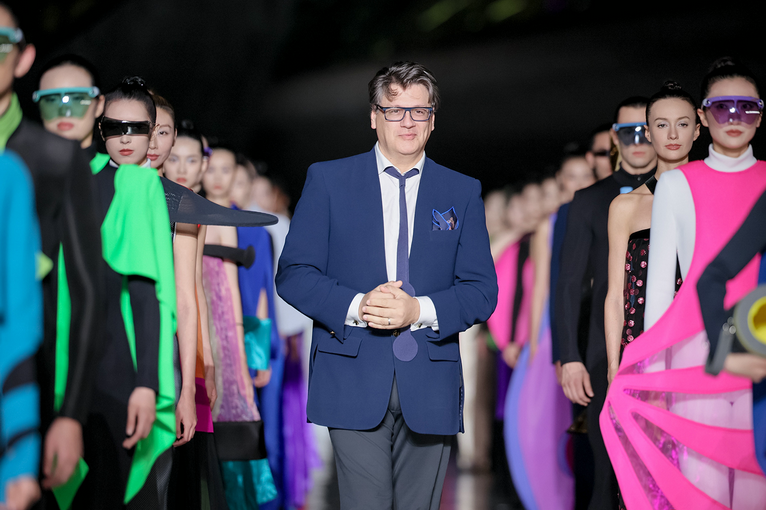Pleasure and pain


Height is perhaps the most noticeable signifier of status and identity, and examples of elevating footwear can be found all over the world, making their wearers stand above the crowd. The pedestal-like chopine of late-16th- to early-17th-century Europe, which was particularly popular in Italy and Spain, transformed upper-class women into towering figures, sometimes so exceptionally high that their maids had to be used as human crutches.
And even when otherwise naked, wearers have expressed their status through decorative (but very tall) footwear. In China during the Qing Dynasty, elite Manchu women wore high, centrally heeled shoes, producing a distinctive swaying walk, while men wore shoes with stacked platforms. The geta, the traditional, simple wooden clog worn in Japan, became richly decorated for the nobility and took its wearer to extreme heights during the Edo period (1603–1868). Indian silver toe-knob sandals, known as paduka, were probably a wedding present to the bride in 19th-century India and, although mainly ceremonial, would make the bride stand out when they were worn, so that she was easily spotted and admired in the gathering.
Even when shoes appear to be functional and comfortable – like the soft, flat pumps favoured in the Western world for the first half of the 19th century (and the similar-looking ballet pumps today) – they can be as physically restrictive as high heels. The silk-satin uppers and very thin soles of such shoes were not made for walking, and in effect limited women to the domestic sphere.




































